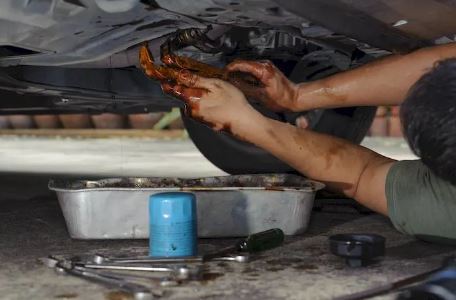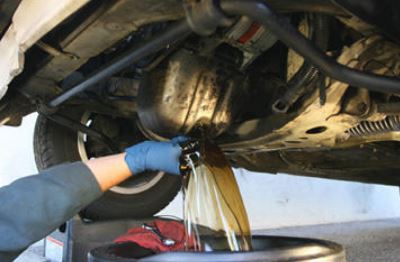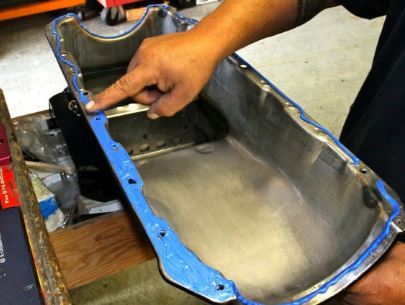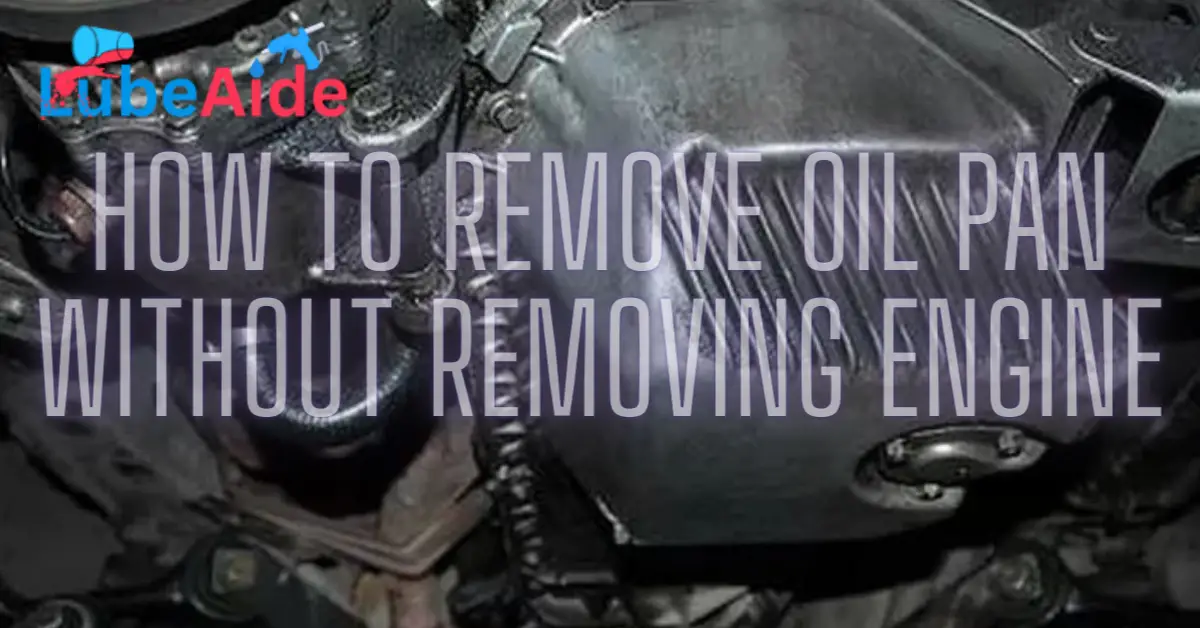If you’re experiencing issues with how to remove oil pan without removing engine it may seem like a daunting task. However, in some cases, it’s possible to remove the oil pan without removing the engine. This can save you time and money, as removing the engine can be a complex and expensive process.
Fortunately, there is a way to remove the oil pan without removing the engine, and here, we will guide you through the steps to do so. So, whether you are a seasoned mechanic or a car enthusiast looking to save on repair costs, keep reading to learn how to remove the oil pan without removing the engine.
Tools and Materials Needed

Removing an oil pan without removing the engine requires a few tools and materials. Here are some of the things you will need:
- Jack stands or ramps to raise the car
- A socket wrench set with various sizes of sockets
- A torque wrench
- A scraper or putty knife to remove the old gasket material
- A new oil pan gasket
- A drain pan to catch the old oil
- A funnel to pour in the new oil
- New oil and oil filter
It’s important to have all of these tools and materials on hand before you start the job. Make sure you have the correct size sockets for the bolts that hold the oil pan in place. A torque wrench is also important to ensure that the bolts are tightened to the correct specifications.
Preparation

Removing an oil pan without removing the engine can be a daunting task, but with the right tools and preparation, it can be done. Here are some steps to help you prepare:
- Ensure that you have enough space to work on the underside of the car. If necessary, use a jack to raise the car and secure it with jack stands.
- Remove any parts that may be blocking access to the oil pan, such as the exhaust system or the transmission cross member.
- Drain the oil from the engine and remove the oil filter.
- Disconnect any electrical connections or hoses that may be attached to the oil pan.
- Remove the bolts that hold the oil pan in place. Be sure to keep track of the bolts and their locations, as some may be different sizes or lengths.
It is important to have the right tools on hand to make the job easier. Here are some tools that you may need:
| Tool | Purpose |
| Socket wrench | To loosen and remove the bolts that hold the oil pan in place. |
| Ratchet with a Cardan | To access bolts that may be in hard-to-reach areas. |
| Gasket scraper | Remove the old gasket material from the oil pan and engine block. |
| Safety glasses | To protect your eyes from debris or oil splatter. |
By following these steps and having the right tools on hand, you can successfully prepare to remove the oil pan without removing the engine.
Removing the Oil Pan

Removing the oil pan without removing the engine is a task that requires some patience and attention to detail. Here are the steps to follow:
- First, make sure that the engine is cool and that the car is parked on a level surface. This will prevent any accidents and ensure that the oil drains properly.
- Next, drain the oil from the oil pan. You can do this by removing the drain plug at the bottom of the pan. Make sure to have a container to catch the oil.
- Once the oil has drained out, remove the bolts that hold the oil pan in place. There are usually between 10 and 14 bolts, depending on the make and model of your car.
- Use a pry bar to carefully pry between the engine and the pan if it is stuck. Do not use excessive force as this can damage the engine or the pan.
- If necessary, use a swivel socket, a long ratchet extension, and a ratchet to remove the oil pan mounting bolts from around the pan flange by unscrewing them.
- Finally, lightly tap one side of the pan with a rubber mallet to release it from the engine. Be careful not to damage the pan or the engine.
Once the oil pan is removed, clean it thoroughly with a degreaser to remove any dirt or debris. For hard-to-reach areas, utilize a brush or other small tool to ensure complete coverage with the degreaser. Leave the degreaser on for a minimum of 10 minutes before using a stiff brush or wire brush to scrub away any remaining dirt or debris. Finally, rinse off all surfaces thoroughly with water once finished.
It is important to note that when reinstalling the oil pan, you should use a new gasket and torque the bolts to the manufacturer’s specifications. This will ensure that the pan is properly sealed and prevent leaks.
Installation of the Oil Pan

Once you have successfully removed the oil pan, it’s time to install it back. Follow the steps below to install the oil pan:
- Clean the pan and the engine block surface where the gasket will be placed.
- Install a new gasket on the oil pan. Make sure the gasket is properly aligned with the bolt holes.
- Place the oil pan back onto the engine block. Make sure it is properly aligned with the bolt holes and the gasket is not slipping out of place.
- Hand-tighten the bolts to secure the oil pan in place. Do not over-tighten the bolts as it may damage the gasket or the oil pan.
- Tighten the bolts in a criss-cross pattern to ensure even tightening. Refer to the torque specifications for your specific vehicle to determine the correct torque settings.
- Reinstall any parts that were removed earlier such as the starter, distributor cap, and exhaust y-pipe.
- Refill the engine with the recommended amount of oil and start the engine to check for any leaks.
It is important to ensure that the oil pan is properly installed to prevent any leaks. Always refer to your vehicle’s manual for specific instructions and torque specifications. If you are unsure about any step, seek the help of a professional mechanic.
Common Challenges and How to Overcome Them
Removing an oil pan without removing the engine can be a difficult task, and there are some common challenges that people often encounter. Here are some of the most common issues that people run into when removing an oil pan without removing the engine, along with tips for overcoming them:
Issue 1: Difficulty Accessing the Oil Pan Bolts
One of the most significant challenges of removing an oil pan without removing the engine is that the oil pan bolts can be difficult to access. This is especially true for vehicles with a low clearance.
Solution: Use Specialized Tools
To overcome this issue, you can use specialized tools such as a universal joint and a long extension to reach the bolts. Alternatively, you can use a swivel socket or a wrench with a universal joint attachment.
Issue 2: Stuck Oil Pan
Another common issue that people face when removing an oil pan without removing the engine is that the oil pan can become stuck to the engine block. This can happen if the gasket has become fused to the engine block due to age, heat, or other factors.
Solution: Use a Gasket Scraper
To remove a stuck oil pan, you can use a gasket scraper to carefully pry the pan away from the engine block. Be careful not to damage the mating surfaces, as this could cause leaks. If the gasket is particularly stubborn, you may need to use a heat gun to soften it.
Issue 3: Damaged Oil Pan
Occasionally, people find that their oil pan is damaged or corroded, making it difficult to remove or reinstall.
Solution: Repair or Replace the Oil Pan
If your oil pan is damaged, you will need to either repair or replace it. If it is only a minor issue, you may be able to repair it with a patch or a weld. However, if the damage is severe, it is recommended that you replace the entire oil pan.
Tips and Tricks for Removing an Oil Pan Without Removing the Engine
Removing an oil pan without removing the engine can be a tricky process, but there are some tips and tricks that can make it easier:
Tip 1: Use a Quality Gasket
One of the most important tips for removing an oil pan without removing the engine is to use a high-quality gasket. This will help ensure a tight seal and prevent leaks.
Tip 2: Use a Torque Wrench
When reinstalling the oil pan, it is important to use a torque wrench to ensure that the bolts are tightened to the correct specification. This will prevent overtightening or undertightening, which can cause leaks.
Trick 1: Use a Mirror
If you are having difficulty accessing the oil pan bolts, you can use a mirror to help you see what you’re doing. This can be especially helpful if you are working on a vehicle with limited clearance.
Trick 2: Use a Magnet
To prevent losing any bolts or small parts while working on your vehicle, you can use a magnet to keep them in place. This can be especially helpful if you are working in a tight space where dropping a bolt could be a big problem.
FAQs About How To Remove Oil Pan Without Removing Engine
Can I remove an oil pan without draining the oil first?
No, it is not recommended to remove an oil pan without draining the oil first. If you attempt to do so, you will likely end up with oil everywhere, which can be messy and potentially dangerous.
Do I need to remove the engine to replace the oil pan gasket?
No, it is not necessary to remove the engine to replace the oil pan gasket. However, it can be a tricky process and requires some specialized tools and knowledge.
How do I know if my oil pan needs to be replaced?
If you notice oil leaking from the oil pan or see visible damage, such as cracks or corrosion, then it may be time to replace the oil pan. You may also notice that your oil level is consistently low or that your oil pressure warning light is on. If you’re unsure, it’s best to have a professional mechanic take a look.
Can I drive my car with a damaged oil pan?
It’s not recommended to drive your car with a damaged oil pan as this can cause significant engine damage due to oil loss. If you suspect that your oil pan is damaged, it’s important to have it inspected and repaired or replaced as soon as possible.
How often should I replace my oil pan gasket?
The frequency with which you should replace your oil pan gasket will depend on your vehicle’s make and model, as well as your driving habits. However, as a general rule, it’s recommended to replace the gasket every time you replace the oil pan or if you notice any signs of leaking.
In The End
In short, removing an oil pan without removing the engine can be challenging, but not impossible. Use quality tools and a high-quality gasket, and follow the tips and tricks in this article to make the process easier and more efficient. Regular oil pan maintenance is essential to keep your vehicle running smoothly and prevent costly engine damage. By addressing issues promptly and staying on top of maintenance, you can ensure a long and healthy life for your engine. With the right approach and some know-how, you can successfully remove and reinstall an oil pan without removing the engine.
Related Topics:
- How Long to Let Engine Cool Before Adding Oil
- Oil Change Check Engine Light
- Which Engine Component Stores Oil for Lubrication
- How To Remove Oil Pan Without Removing Engine
- Is It Ok to Change Engine Oil Brands
- How Much Oil Should a Car Burn Between Oil Changes
- Is Lucas Oil Stabilizer Good for Your Engine
- what will happen if i don’t use dexos oil


